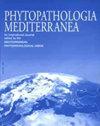化学和生物喷种防治大蒜干腐病的效果研究
IF 1.9
3区 农林科学
Q2 AGRONOMY
引用次数: 2
摘要
由增殖镰刀菌引起的大蒜干腐病是一种新出现的采后病害,已造成严重的经济损失,因此需要设计和实施有效的病害控制策略。种植丁香的卫生对预防大蒜干腐病至关重要。本研究评估了商业化学品和生物防治剂在种植时作为喷雾处理的效果,以降低疾病的严重程度和镰刀菌的发生。从田间阶段到采后储存9个月,大蒜中的镰刀菌属。戊唑醇在降低疾病严重程度方面最为有效,与未经治疗的对照组相比,丁香的基板腐烂减少26.5%,球茎腐烂减少44%,可见症状减少33.4%。应用枯草芽孢杆菌和灰绿色链霉菌获得了可比较的结果。然而,本研究中测试的活性成分均未降低底板上尖孢镰刀菌和增殖镰刀菌的发病率,尽管戊唑醇使丁香采后增殖镰刀豆的发病率降低了近50%。在从储存到室温(25°C)下储存15天的球茎中,F.增殖的发生率增加了37%,模拟了在消费者家中的储存。这些结果表明,喷雾种子丁香处理对采后大蒜干腐病具有抑制作用,尽管还需要进一步的研究来确定这些处理在长期储存期间的持久性,特别是在没有低温的情况下。本文章由计算机程序翻译,如有差异,请以英文原文为准。
Efficacy of chemical and biological spray seed treatments in preventing garlic dry rot
Garlic dry rot caused by Fusarium proliferatum is an emerging postharvest disease that has resulted in severe economic losses, necessitating design and implementation of efficient disease control strategies. Sanitation of planting cloves is critical for preventing garlic dry rot. This study evaluated the efficacy of commercial chemicals and biocontrol agents, applied at planting as spray treatments, for reducing disease severity and the occurrence of Fusarium spp. in garlic, from the field stage then through 9 months of postharvest storage. Tebuconazole was the most effective for reducing disease severity, giving 26.5% reduction of basal plate rots and 44% reduction of bulb rots, and 33.4% reduction in visible symptoms on cloves relative to the untreated controls. Comparable results were obtained by applying B. subtilis and S. griseoviridis. However, none of the active ingredients tested in this study reduced the incidence of F. oxysporum and F. proliferatum on basal plates, although tebuconazole reduced the postharvest incidence of F. proliferatum on cloves by nearly 50%. Incidence of F. proliferatum increased by 37% in bulbs transferred from storage to room temperature (25°C) for 15 days, simulating storage in consumers’ homes. These results demonstrate that spray seed clove treatments have inhibitory effects on postharvest garlic dry rot, although further research is required to determine the persistence of these treatments during prolonged storage, especially without low temperatures.
求助全文
通过发布文献求助,成功后即可免费获取论文全文。
去求助
来源期刊

Phytopathologia Mediterranea
生物-植物科学
CiteScore
4.40
自引率
8.30%
发文量
28
审稿时长
6-12 weeks
期刊介绍:
Phytopathologia Mediterranea is an international journal edited by the Mediterranean Phytopathological Union. The journal’s mission is the promotion of plant health for Mediterranean crops, climate and regions, safe food production, and the transfer of new knowledge on plant diseases and their sustainable management.
The journal deals with all areas of plant pathology, including etiology, epidemiology, disease control, biochemical and physiological aspects, and utilization of molecular technologies. All types of plant pathogens are covered, including fungi, oomycetes, nematodes, protozoa, bacteria, phytoplasmas, viruses, and viroids. The journal also gives a special attention to research on mycotoxins, biological and integrated management of plant diseases, and the use of natural substances in disease and weed control. The journal focuses on pathology of Mediterranean crops grown throughout the world.
The Editorial Board of Phytopathologia Mediterranea has recently been reorganised, under two Editors-in-Chief and with an increased number of editors.
 求助内容:
求助内容: 应助结果提醒方式:
应助结果提醒方式:


